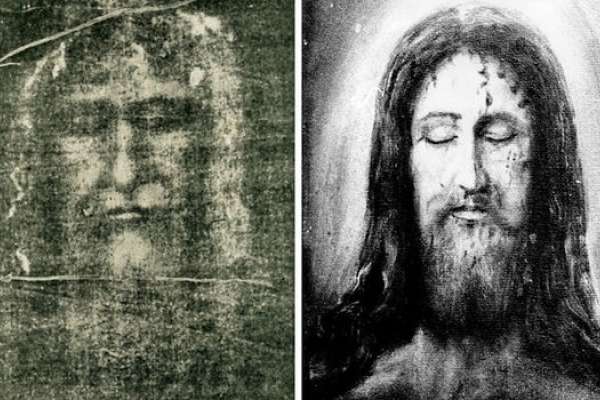The Shroud of Turin is a centuries old linen cloth that bears the image of a man that millions believe to be Jesus of Nazareth. However, the origin and authenticity of the Shroud of Turin has been in question for centuries and numerous scientific investigations on the piece of linen has failed to resolve the debate over whether the cloth is a miracle, an elaborate hoax, or an accident of circumstances? Now, a new study published in the journal Meccanica claims that characteristics of the shroud may have been caused by an earthquake and that the shroud may be real after all.

The Shroud of Turin, which bears a faint image of a man’s face and torso, is said to be the fabric that covered Jesus’ body after his crucifixion in 33 AD. Proponents of this idea claim that the image depicts physical trauma in a manner consistent with crucifixion. Though the Catholic Church doesn’t have an official position on the cloth, the relic is visited by tens of thousands of worshippers at the in the royal chapel of the Cathedral of Saint John the Baptist in Turin, northern Italy.
In 1988, radiocarbon dating tests were performed on small samples of the shroud and published in the journal Nature. The laboratories at the University of Oxford, the University of Arizona, and the Swiss Federal Institute of Technology concurred that the samples they tested dated from the Middle Ages, between 1260 and 1390 AD. But critics in favour of a much older date for the cloth allege that the samples of fabric that were tested came from a section that was used to patch up the burial shroud in the medieval period, or that the fabric had been subjected to fires, contamination and other damaged that skewed the results.

According to former Nature editor Philip Ball, “it’s fair to say that, despite the seemingly definitive tests in 1988, the status of the Shroud of Turin is murkier than ever. Not least, the nature of the image and how it was fixed on the cloth remain deeply puzzling”. The shroud has continued to remain one of the most studied and controversial objects in human history. But could the latest study have the answers?
According to the latest research, neutron emissions from an ancient earthquake that rocked Jerusalem around 2,000 years ago could have created the iconic image, as well as mixed up the radiocarbon levels leading to the erroneous conclusion that the Shroud of Turin was produced in the Middle Ages.
The group of scientists, led by Alberto Carpinteri of the Politecnico di Torino in Italy, have suggested that these neutron emissions could have interacted directly with nitrogen atoms in the linen fibres, inducing chemical reactions that created the distinctive face and body image on the shroud.

But other scientists say this newly proposed premise leaves some major questions unanswered. According to Gordon Cook, a professor of environmental geochemistry at the University of Glasgow, even if earthquake-generated neutrons could cause this kind of reaction, the study doesn’t address why this effect hasn’t been seen elsewhere in the archaeological record. Christopher Ramsey, director of the Oxford Radiocarbon Accelerator Unit, had a similar issue: “One question that would need to be addressed is why the material here is affected, but other archaeological and geological material in the ground is not.”
It seems unlikely that the new study, published in the journal Meccanica, will settle any of the long-standing disputes about how and when the cloth was made, which depend largely on faith.